March 2, 2021
Magadan–Moscow, Part Two: I did it my way – along the Kolyma Highway.
I’ve already shown you just how beautiful the Kolyma Highway can get in the deepest winter. I hope those pics have been suitably enjoyed and appreciated by you all, and maybe will encourage some of you to go experience Kolyma for yourselves: highly recommended!
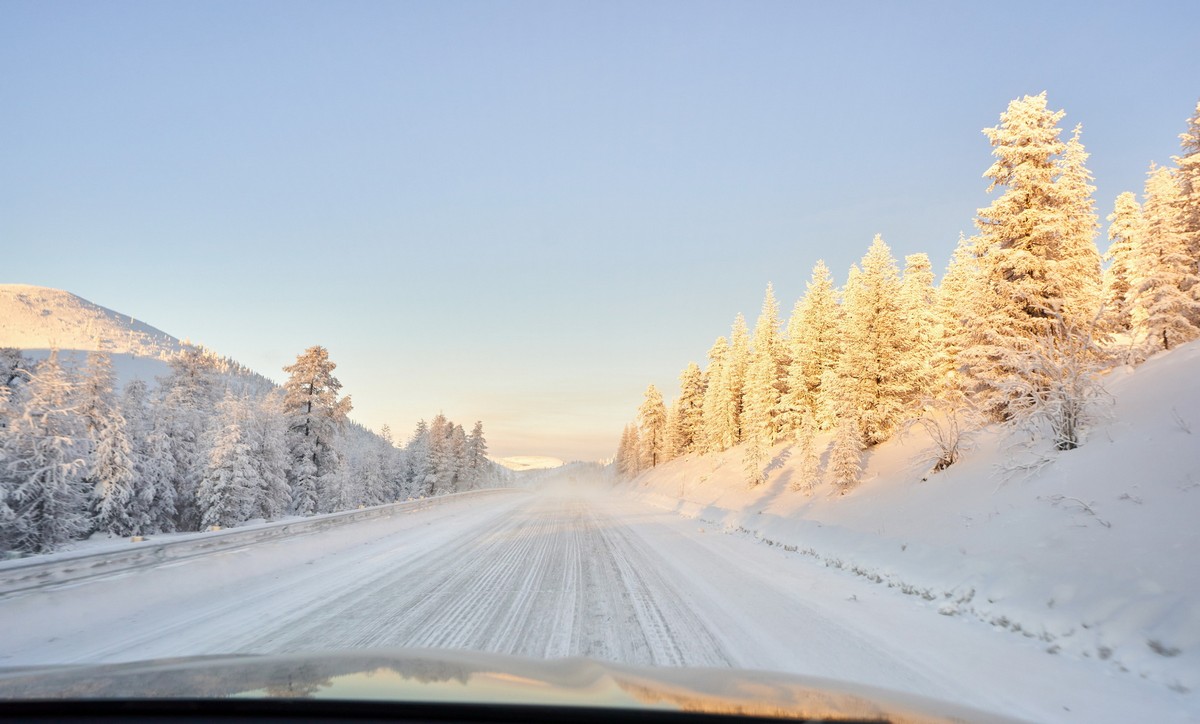
Now, in those snaps – did you notice just how smooth and cleared-of-deep-snow the road was? Like – every single pic (and I can tell you that there was hardly an (un-photographed) stretch of the road that wasn’t just as smooth and free of snow). Well, while taking said pics, I sure noticed – and couldn’t quite believe my eyes. In Moscow there can be streets covered with more freshly-fallen snow, and it possesses legions of snow clearing trucks in every district! And this was my second amazement on this trip (after the first: the hypnotic white-winter-wonderland scenery, that is): the quality and keen maintenance of the roads.
So what was I expecting instead? Well, like most anyone who lives in Moscow, if I would hear words like Yakutia, Kolyma, Magadan and roads together, I’d expect the accompanying scenes to be thoroughly, utterly grim and hopeless. Something like: thousands of miles of poorly-surfaced, potholed, muddy roads, streaked with deep ruts and with plenty of cars getting stranded in thick mud awaiting assistance.
How wrong I was!…
The full length of the road was absurdly well-kempt and cleared of most of the snow – but there was absolutely no one around! It was like science fiction!
Have you read some sci-fi? You know, like, about traveling through outer space (and time) to other worlds and the rest of it? I have; lots!
So, fancy some sci-fi here on earth (would that be science-non-fiction, or science-reality?!). If so – get yourselves to Kolyma Highway!
For around 100 kilometers from either Magadan or Yakutsk along the Highway – it’s surfaced with smooth asphalt. Fully & clearly signposted, crash barriers where necessary, fresh road markings, and SOS-comms and life-support points along the more remote stretches (through the smaller settlements there’s also asphalt, but it’s not quite as solid).
Here’s a stretch around 80km from Magadan:
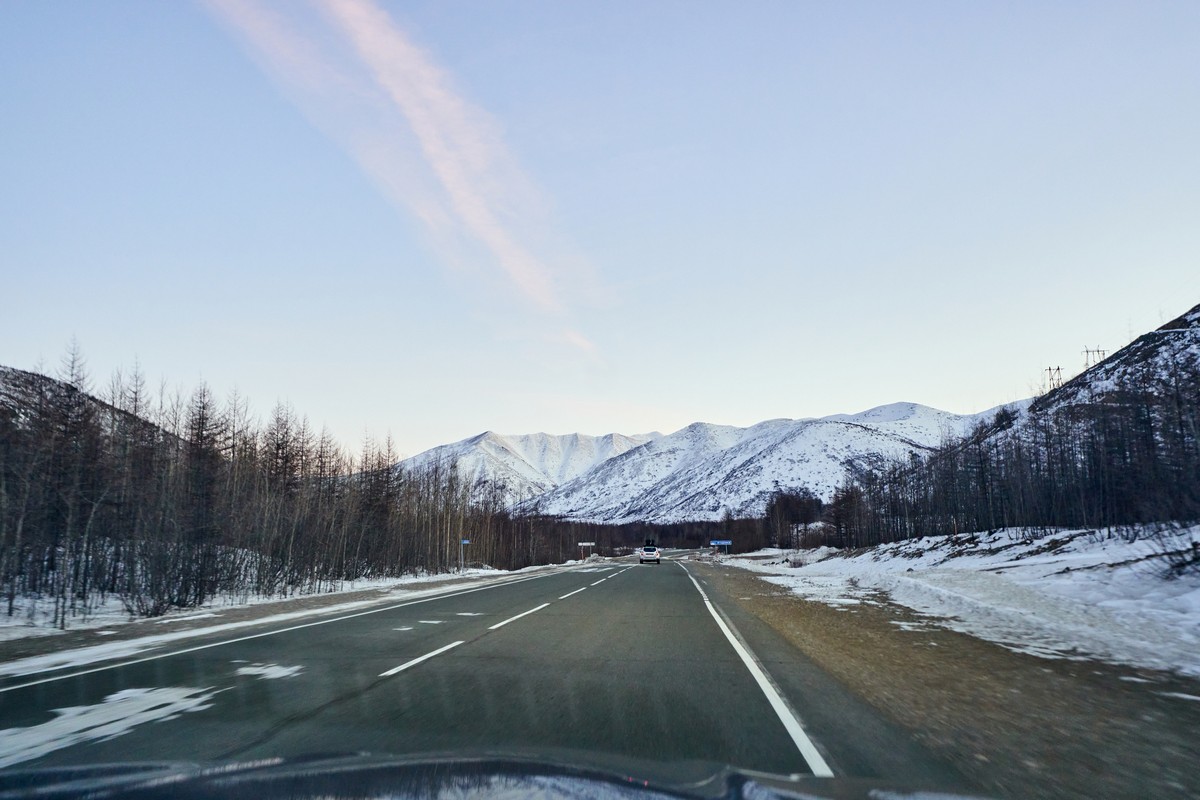
(There’s a video that covers this in an earlier post)
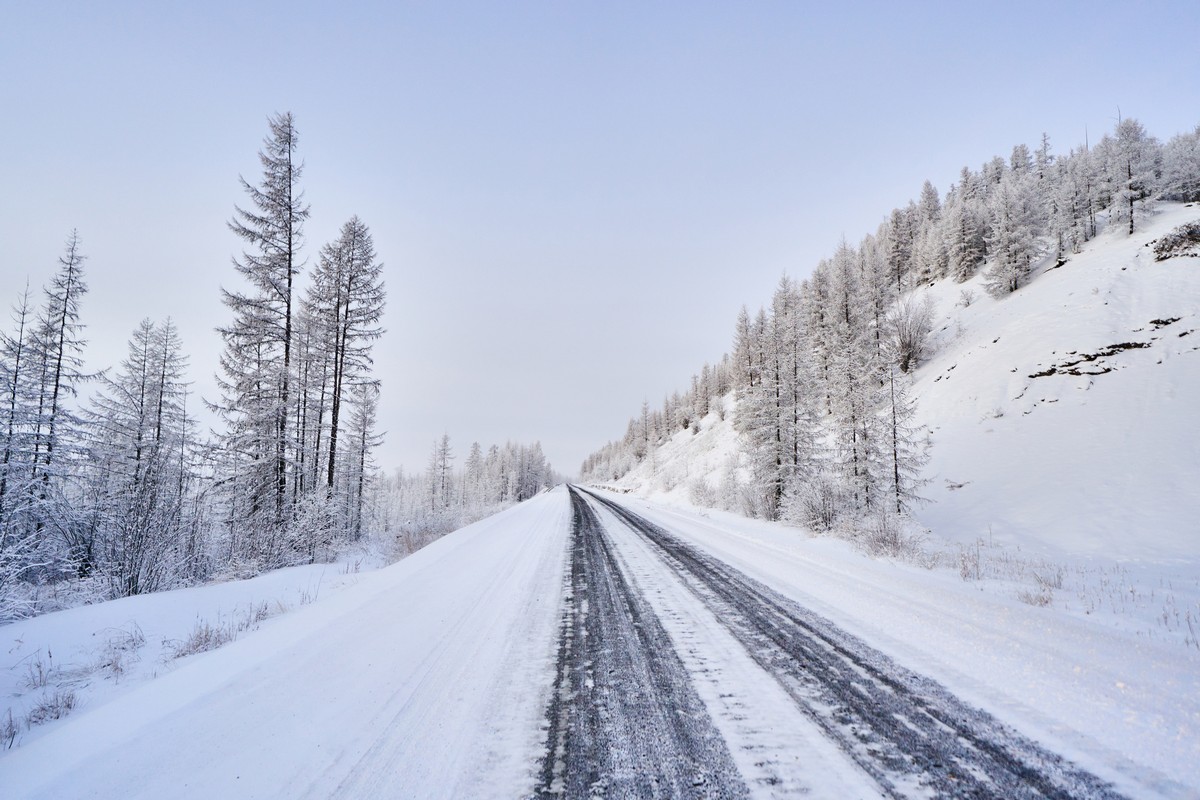
You’ll surely be wondering exactly how the roads are maintained so impressively along the full 2000+km, and by whom. This may surprise you, but… I still don’t know! We didn’t see armies of – or even just one or two – snow-clearing or salt-scattering vehicles along the full route. See. Told you: sci-fi!
// Brief digression =>
Seeing roads as well-maintained as this got me all… patriotic! I mean, where else would you get such a long road in extreme climatic and geographical (read – super-remote) conditions taken such meticulous care of? I’d hazard a guess at… nowhere! You might think Canada or Alaska, but they don’t have such super-remote roads, there’s less permafrostiness, and there are a lot more folks there; you can’t really make a comparison.
Digression #2! =>
Now, the non-Russians among you (which, this version of my blog being in English, will probably make up the majority of you) may not know this but… Nikolai Gogol (oh, I do hope you at least know of him:) once said that Russia’s two greatest misfortunes are… fools and bad roads. That was in the 19th century. Still today, in the 21st, Russians still like to bring up this – seemingly eternally relevant – quote. Well, after traveling the full length of the Kolyma Highway, in the year 2021 of the 21st century, I have an important announcement to make!…
Russia, today, by the looks of it – if Kolyma is representative of the whole of Russia (a stretch, but let’s stay positive) – will soon… suffer just one misfortune! And it’s not roads ).
I say ‘soon’ as, well, the road wasn’t perfect. In places the asphalt had seen better days, and there was the odd deep pothole here and there, but they were the exception to the rule; and thank goodness: for, when the mercury went below -50°C, our cars’ suspension would stiffen up (aka freeze!), making us able to detect every small stone that happened to lie on the road that we drove over immediately through our… yes… posteriors! Posteriors duly not shot to pieces was simply further confirmation: soon just one misfortune left ).
All righty. Now for a few words about our cars on our road-trip (is that another digression? I don’t think so)…
- We didn’t drive all that fast – normally around 70-90 km/h (45-55mph); this was so we didn’t’ wreck the suspension and other vital parts of the cars!
- After the cars had been at a standstill for a time (while refueling, having lunch, other stops), we would drive at first really quite slowly; this was in order to give the engine (oil, etc.) and suspension and other components some time to warm up a bit so that nothing literally ‘blew a gasket’.
- In a parking lot, we’d always park with the nose of the cars facing the exit; this was so that the cars’ frozen-to-death steering rods, levers, suspension and what-have-you didn’t… snap when moving off! Example: turning the steering wheel to the max left or right was categorically forbidden.
- The above three points – they apply to daytime; nighttime: no way were the cars going to be left outside. Instead they were treated to a nice warm – mandatory! – garage to sleep in!
Here in the photo – a ‘washboard’ length of the road (much like in Namibia). Not nice given the hardened suspension. Mercifully, it wasn’t too long:
The above pics capture the road at its worst: bumpy-bumpy. Still, to keep things positive, everywhere where it was like that there were some road repairs going on (rather, construction of a new road).
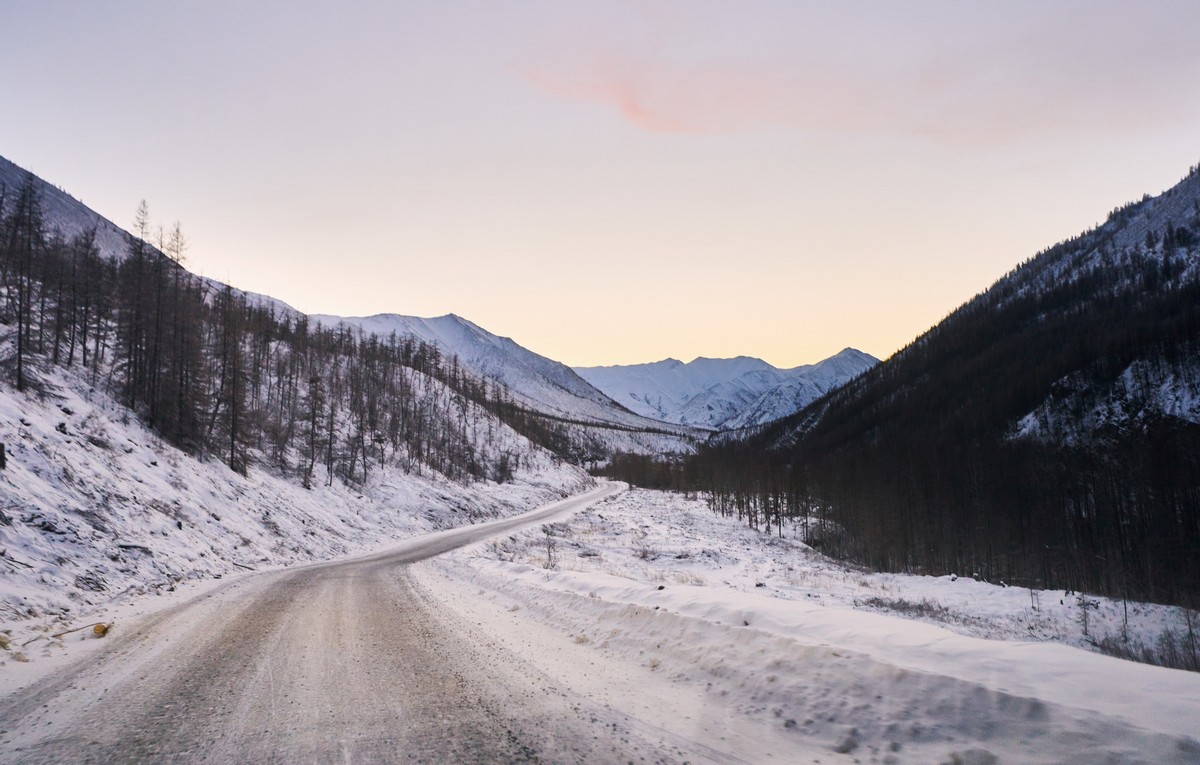
But mostly, on the single-track stretches, the smoothness was dream to drive upon ->
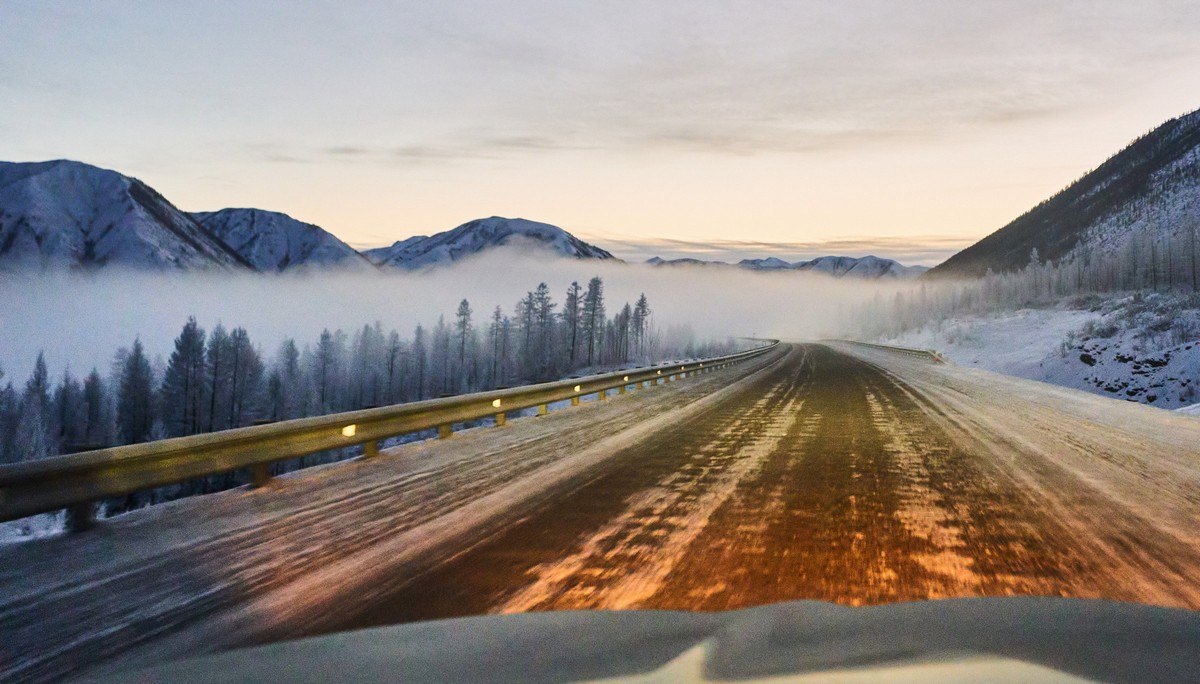
Btw, as you can see in the following pic – our cars were all Renaults. But I’ll save the story about them for another time…
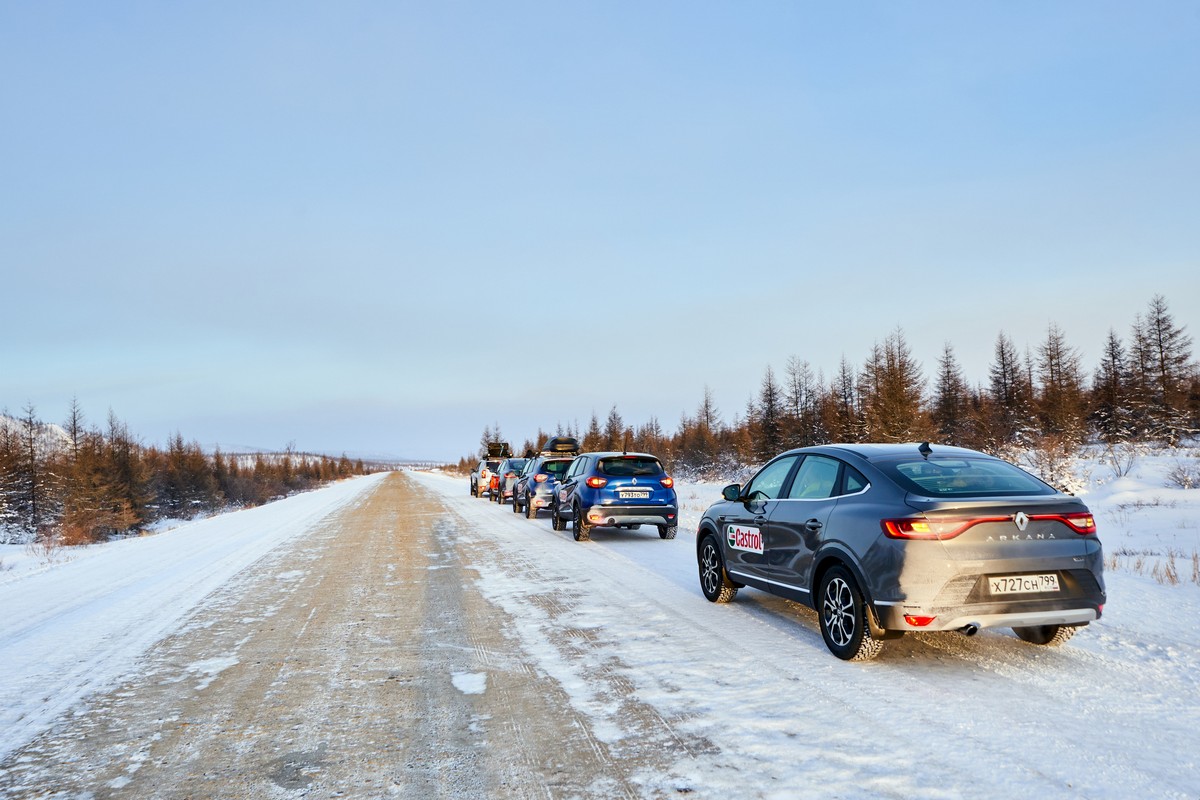
Another btw: the gravel roads in January were of course frozen and a lot firmer than they are than at other times of the year. Apparently the gravelliness can be really quite aggressive in summer, and can even slash summer tires (again, like in Namibia). So yes, remember: these tales of mine are exclusively winter-tales.
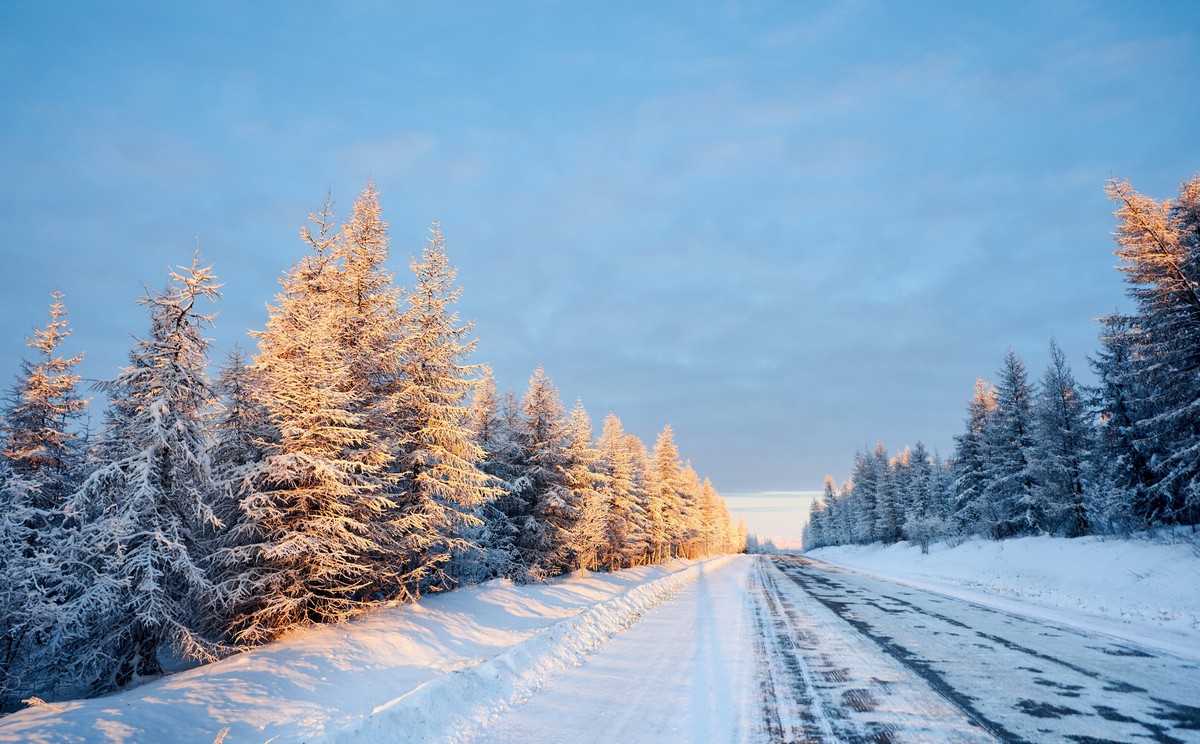
Though I don’t know who keeps the Kolyma Highway so well-maintained and clear of snow – or how – I’d nonetheless like to say to whomever it is – THANK YOU!
Meanwhile, here’s part three of the YouTube dash-cam series from the Permafrost side: Ust-Nera–Oymyakon. Yes – it’s eight hours long!
And yes, once again – here’s your summary ->
0:12:30 – Crossing the river Indigirka.
0:34:00 – The Olchansky Pass.
1:20:00 – Mountain pass. We stopped and had a walkabout. Then a delicious descent down from the pass, then a super-straight stretch of road through white forest.
2:36:30 – Passing a truck. “Wow”, I can hear you say. Actually, in these conditions – quite the spectacle, and a bit unnerving (“er, I think – and hope – the road is straight ahead, though I can actually see it!”
4:07:07 – Gas stop; food stop – in the ‘Cuba’ café.
4:10:30 – The Tomtor/Oymyakon turning. Henceforth – more winter-wunderbar…
6:50:00 – Tomtor.
8:03:30 – Oymyakon.
And that’s all for today folks! Back tomorrow!…
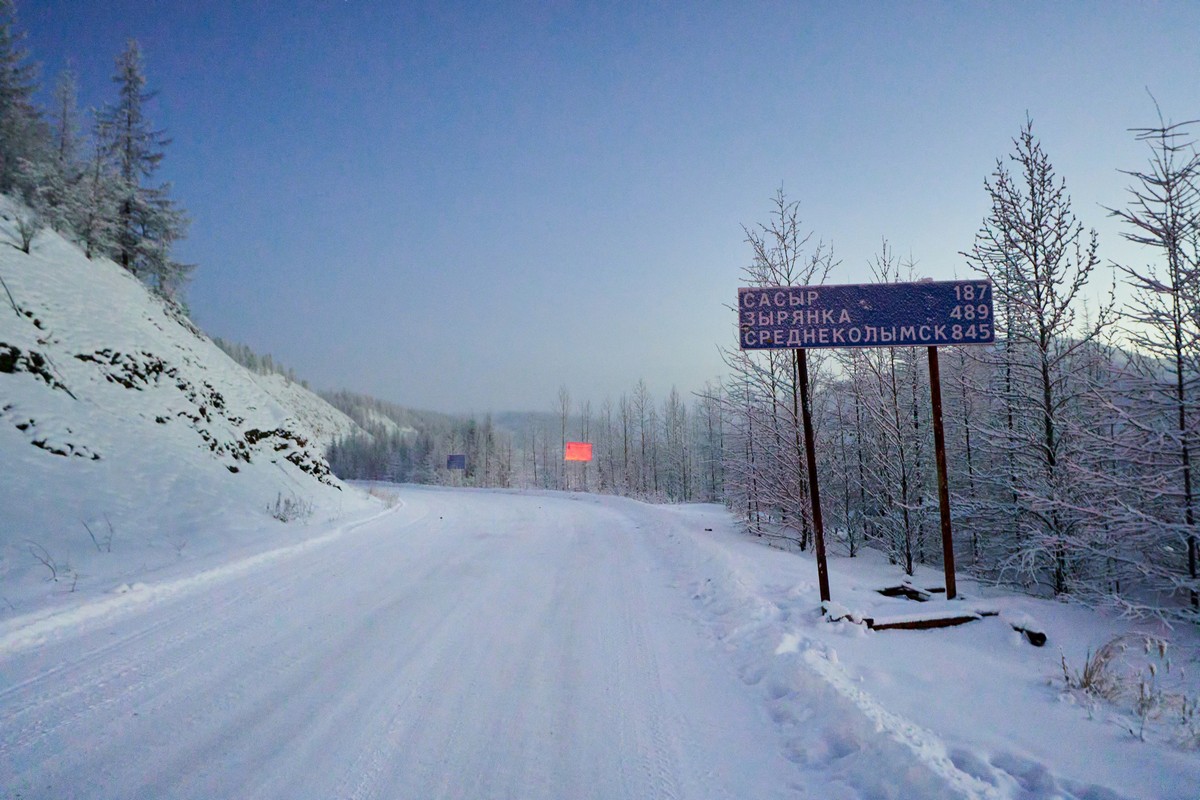
The rest of the snaps from our Magadan–Moscow road trip are here.



